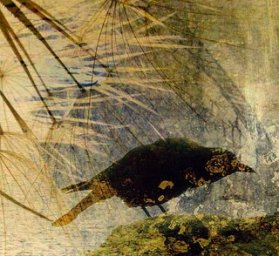Mental Illness and Creativity
 The idea that creativity is strongly associated with mental illness was popular since Aristotle’s era. Many recent studies seem to support this claim.
The idea that creativity is strongly associated with mental illness was popular since Aristotle’s era. Many recent studies seem to support this claim.
Here are a few findings that suggest that the link between art and mental illness really exists:
- 1. Researchers (Jamison, 1989; Janka, 2004) have found high levels of psychopathology, especially, depression and bipolar disorder (I, II & cyclothymia) in writers, poets, visual artists and composers, compared to the rates in the general population. Furthermore, artistic creatives and psychiatric patients share a tendency to unusual ideas and experiences. Moreover, different domains of creativity require different cognitive profiles, with poetry and art associated with divergent thinking, schizophrenia and affective disorder (Nettle, 2005).
- Family studies have produced evidence of creative interests and aptitudes in close relatives of psychiatric patients, including biological relatives separated by adoption (Andreasen, 1987). This supports the idea that there is an inherited personality or cognitive trait that has both creativity and mental illness in its range of effects.
- Research on psychiatric patients, usually with a diagnosis of schizophrenia, suggest that they have enhanced performance relative to control participants on tasks that require divergent thinking (Hasenfus & Magaro, 1976; Jamison, 1989). Divergent thinking is strongly connected to creativity.
- A new theory based on genetics suggest that gene mutations that increase a person’s risk of developing mental illnesses such as schizophrenia and bipolar syndrome have been preserved, even preferred, during human evolution, due to their relationship with creativity. More specifically, a specific gene, neuregulin 1 is linked to a slightly increased risk of schizophrenia. Mutations to this gene were found to be linked with psychosis, poor memory and sensitive to criticism. About 50 per cent of healthy Europeans have one copy of this mutation, while 15 per cent possess two copies. People with two copies of the neuregulin 1 mutation tended to score notably higher on these measures of creativity, compared with other volunteers with one or no copy of the mutation. A significant increase in creativity relative to participants with no copy of this gene was found to people possessing only one copy of the mutation. However, the mutation of neuregulin 1 can explain only a small part of the differences in creativity levels (Kéri, 2009). Other researchers (Nettle & Clegg, 2005) “blame” the artists for the persistence of schizophrenia, as they have schizotypal personality traits and are more successful in finding sexual partners compared to non artistic individuals. However, this idea isn’t that popular among artists.
- Symptoms of certain disorders like hypomania (mild mania) favour creativity by giving a boost to the imagination and energy. On the other hand, full blown symptoms or more serious disorders have the opposite effect and inhibit creativity.
Suggested readings:
Artistic tendencies linked to ‘schizophrenia gene – New Scientist article
A beautiful mind – BBC News
Manic-Depressive Illness and Creativity by K.R. Jamison – Scientific American
Creativity andmental health by J. Schlesinger – The British Journal of Psychiatry
Connecting Depression and Artistry by R.A. Friedman (MD) – The New York Times
Biological Basis For Creativity Linked To Mental Illness – Science Daily

You may want to check this out, too (for those with an hour and a half to ‘waste’) -> http://www.iop.kcl.ac.uk/podcast/?id=270&type=item
Another interesting podcast from IoP ! Thanks!
“blame” the artists ? dangerous theories!!!
The evidence demonstrating a correlation between creativity and mental illness is not surprising. Some of those suffering from bipolar disorder, for example, display exceptional abilities in numerous areas. One such example can be seen within the pages of my recently released biographical novel, Broken Saint. It is based on my forty-year friendship with a brilliant bipolar man, and chronicles his internal and external struggles as he battles for stability. Sadly, the price paid for possessing unusual mental gifts may not be worth it; that is a value judgment and opinions will certainly vary. In any case, more information on the book is available at http://www.eloquentbooks.com/BrokenSaint.html.
Mark Zamen
Maria
You might find the concept of Migraine Art interesting:
Migraine is clearly not a mental illness, yet the
visual (and other) neurological symptoms can inspire
creativity.
See here:
http://www.migraine-aura.org/content/e24966/index_en.html
Markus
“What a wonderful piece of artwork! Now go take your meds.”
Just…ugh…